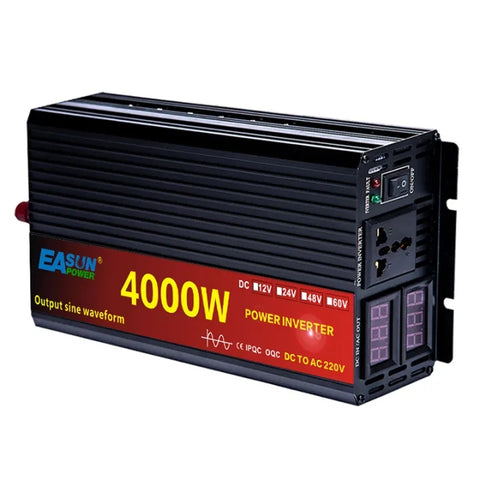In today's fast-paced world, the ability to optimize your car inverter use with these simple techniques can significantly enhance your driving experience. Car inverters are essential for converting DC power from your vehicle's battery into AC power, allowing you to charge devices and run appliances on the go. However, many users are unaware of how to maximize their efficiency. This article will explore practical strategies to help you achieve just that.

Understanding Your Car Inverter
Before diving into optimization techniques, it's crucial to understand what a car inverter does. Essentially, it transforms the direct current (DC) from your car's battery into alternating current (AC), which is necessary for most electronic devices. But how can you ensure that your inverter operates at peak efficiency?
1. Choose the Right Inverter Size
One of the first steps to optimize your car inverter use with these simple techniques is selecting the appropriate inverter size. Inverters come in various wattage ratings, and using an inverter that matches your power needs is essential. If you connect devices that exceed the inverter's capacity, it can lead to overheating and potential damage. Therefore, assess your devices' power requirements and choose an inverter that can handle them comfortably.
2. Maintain Proper Ventilation
Inverters generate heat during operation, which can affect their performance. To ensure optimal functioning, always place your inverter in a well-ventilated area. Avoid covering it with other items or placing it in confined spaces. If the inverter overheats, it may shut down or become less efficient. Regularly check for dust accumulation and clean the unit to maintain airflow.
3. Use Quality Cables and Connectors
The quality of the cables and connectors you use can significantly impact the efficiency of your inverter. Low-quality or damaged cables can lead to power loss and overheating. Always opt for high-quality, appropriately rated cables to ensure a stable connection. This simple step can greatly enhance your inverter's performance and longevity.
4. Monitor Battery Health
Your car's battery plays a crucial role in the efficiency of your inverter. A weak or failing battery can lead to insufficient power supply, affecting the inverter's performance. Regularly check your battery's health and replace it when necessary. By maintaining a healthy battery, you can ensure that your inverter operates smoothly.
Additional Tips for Efficiency
- Limit the number of devices connected to the inverter at one time.
- Turn off devices when not in use to conserve power.
- Consider using a power management system to monitor usage.
By implementing these strategies, you can optimize your car inverter use with these simple techniques and enjoy a more efficient driving experience. For more detailed tips on car inverter efficiency and safety, visit Easun Power's blog.
Conclusion
In conclusion, optimizing your car inverter usage is not only about choosing the right device but also about maintaining it effectively. By following the techniques outlined above, you can enhance your inverter's efficiency and ensure that it meets your power needs while on the road. Remember, a well-maintained inverter contributes to a safer and more enjoyable driving experience.








